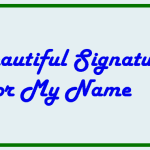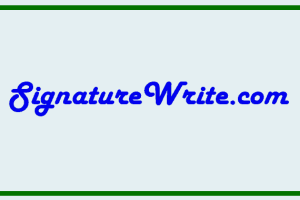Best Signature: Creating an Email Signature That Makes an Impact
Your email signature is an important part of your professional online identity. It’s a reflection of you and your brand, and can help you stand out in a crowded digital landscape. In this post, we’ll explore some tips and tricks for creating the best signature that will make an impact and leave a lasting impression.
What Makes a Good Email Signature?
Before we dive into the details of creating the best signature, let’s take a look at what makes a good email signature. A good email signature should be:
1. Concise: Your signature should be short and sweet, no more than four to six lines of text.
2. Informative: It should include your name, title, and contact information.
3. Professional: Use a professional font and avoid using too many colors or graphics.
4. Memorable: Your signature should be unique and memorable, but not over the top.
How to Create the Best Signature
Now that we know what makes a good email signature, let’s take a look at how to create the best signature that will leave a lasting impression.
1. Keep it Simple: The best signature is one that is simple and easy to read. Stick to a single font, and avoid using too many colors or graphics.
2. Use Consistent Branding: Your signature should be consistent with your branding. Use the same font, color scheme, and logo that you use on your website and other marketing materials.
3. Include Relevant Information: Your signature should include your name, title, phone number, and email address. You can also include a link to your website or social media profiles.
4. Add a Call to Action: Include a call to action in your signature to encourage recipients to take action. This could be anything from scheduling a call to visiting your website.
5. Make it Memorable: To create the best signature, you need to make it memorable. Consider adding a quote or a personal tagline that reflects your personality and brand.
Best Signature Examples
Here are some examples of the best signature that you can use as inspiration for your own email signature:
1. Minimalist: A simple, minimalist signature that includes your name, title, and contact information.
2. Branded: A branded signature that includes your logo and consistent colors and fonts.
3. Personalized: A personalized signature that includes a quote or personal tagline.
4. Interactive: An interactive signature that includes social media icons or links to your website.
Tips for Using Your Signature
Once you’ve created the best signature, it’s important to use it effectively. Here are some tips for using your signature:
1. Use it Consistently: Use your signature in all of your professional email communications.
2. Test it: Test your signature to make sure it looks good on all devices and email clients.
3. Update it Regularly: Update your signature regularly to reflect any changes to your contact information or branding.
4. Keep it Professional: Remember to keep your signature professional and avoid using slang or inappropriate language.
Conclusion
In conclusion, a signature can be an important part of your online presence, whether it’s for personal or business use. It can help to make your emails and documents look more professional, and can even serve as a marketing tool for your brand or company.
When choosing the best signature for your needs, it’s important to consider factors such as your goals, target audience, and personal style. You may want to experiment with different designs and formats to find the one that works best for you.
With the help of tools like Microsoft Outlook, Adobe Acrobat, and Google Docs, creating and managing your signature can be quick and easy. By following the tips and best practices outlined in this article, you can create a signature that stands out and helps you achieve your goals.







Add Comment